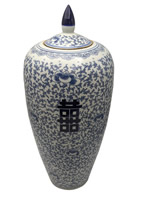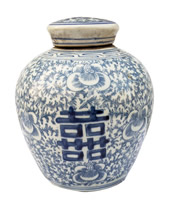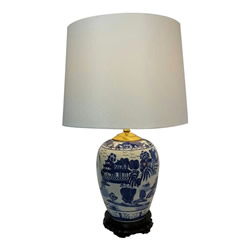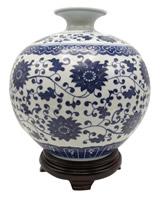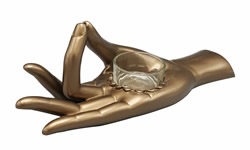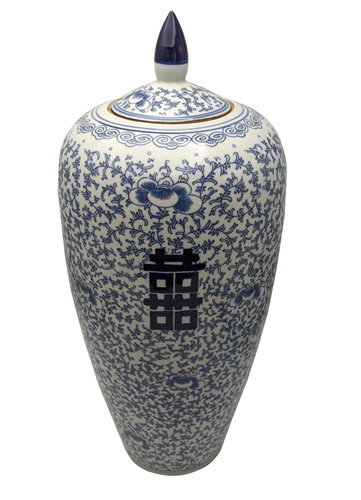Oriental blue and white porcelain has a long and fascinating history stretching over a thousand years. The technique of creating porcelain originated in China during the Tang dynasty (618-907 AD), but it was not until the Yuan dynasty (1279-1368 AD) that blue and white porcelain became popular. However, during the Ming dynasty (1368-1644 AD), blue and white porcelain reached new heights of popularity and artistic sophistication. Ming dynasty blue and white porcelain was characterized by intricate designs and patterns and a broader range of colors, including cobalt blue, red, green, and yellow. The most famous examples of Ming dynasty blue and white porcelain are the porcelain wares produced during the reign of Emperor Chenghua (1465-1487 AD). These wares are notable for their delicate designs, intricate patterns, and vibrant colors. During the Qing dynasty (1644-1912 AD), blue and white porcelain continued to be produced in large quantities, but the style became more restrained and less ornate. Qing dynasty blue and white porcelain was often decorated with natural scenes, such as birds, flowers, and landscapes. Today, blue and white porcelain remains a popular and highly prized form of Chinese pottery. It has been widely imitated and copied worldwide, but the original Ming and Qing dynasty pieces remain the most valuable and sought-after examples of this beautiful art form.

Christine Huvé Interior Design

Summer Thornton Design, Inc

Equilibrium Interior Design Inc

Lisa Borgnes Giramonti
On Promotion This Week, Apr 21st - Apr 27th, 2023:
|
|
Only at
Oriental Furnishings!

